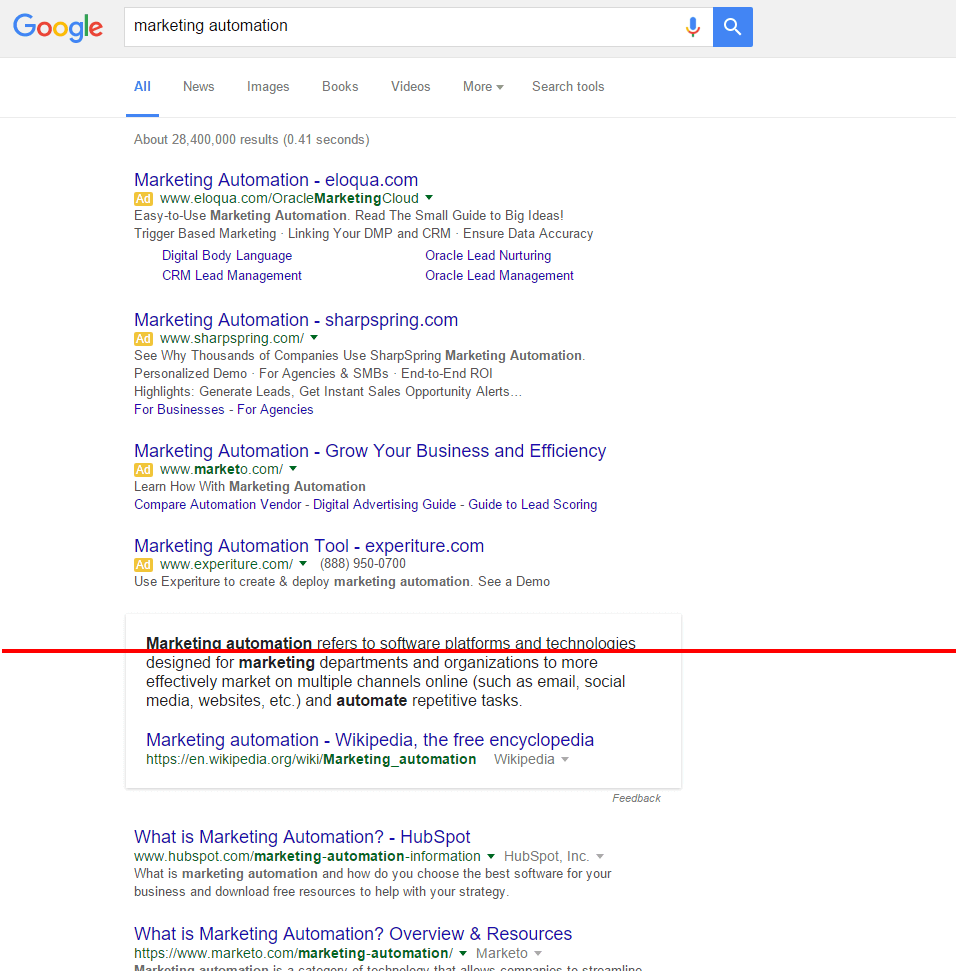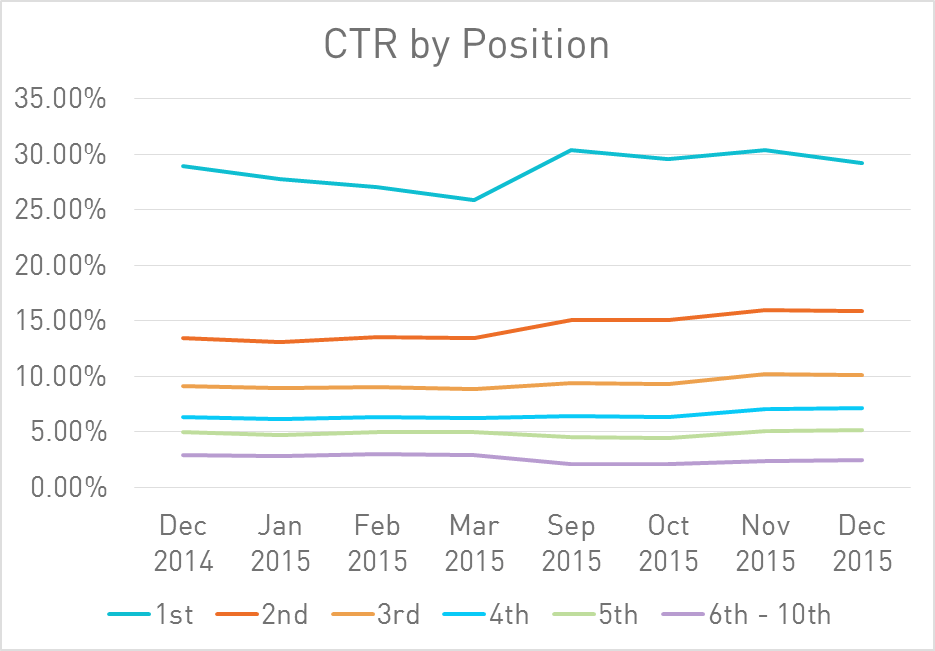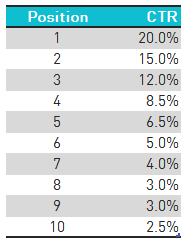By now you’ve no doubt heard the news and seen the results of Google’s major change to its search engine result page (SERP). You may be running around like Chicken Little (but we wouldn’t recommend that). If you are an advertiser, you might see this as an opportunity, or you might just be thinking about how it impacts your advertising strategy.

But what about SEO? How will this impact your strategy for ensuring your site, products, services and solutions show up in Google organic search results? How worried should you be?
Life Below the Fold
Right now just more than 35% of all queries return SERPs with 4 ad blocks at the top of results. This makes it more likely that you’ll have four ads at the top of the search results page, rather than two or three ads combined (which make up about 15% and 10%, respectively). Combined with the fact that about 30% of queries return a SERP with a rich answer above the organic search results, it is now more likely than ever that organic search results will fall below the mythical “fold”. The fold is that point on the screen where you’ll have to scroll to see more content and, as can be seen in the example to the right, organic results can easily fall below the fold.
Learning to Love Scrolling
When discussing this topic with one of my co-workers he said, “I’m not worried, we live in a culture of scrolling now.” And he’s right.  One of the greatest myths in user experience is that people don’t scroll. According to user experience research, more than 90% of users will scroll on a page independent of page design. This may be due to the increasing use of mobile devices on which scrolling (flicking, pushing?) is just part of the native experience. Using mobile devices has gotten us used to seeking out more information by looking deeper into pages. In fact, Google has said one of its goals with this change is to make desktop and mobile search results more similar. Scrolling has also been a part of the user interface for as long as most people have been using computers, and there is no reason to believe when searchers don’t find what they are looking for in search ads, they won’t keep looking for more information below the fold. In fact, based on historic CTR data from Advance Web Rankings CTR study, CTR rates across most first page positions have increased over the last year.
One of the greatest myths in user experience is that people don’t scroll. According to user experience research, more than 90% of users will scroll on a page independent of page design. This may be due to the increasing use of mobile devices on which scrolling (flicking, pushing?) is just part of the native experience. Using mobile devices has gotten us used to seeking out more information by looking deeper into pages. In fact, Google has said one of its goals with this change is to make desktop and mobile search results more similar. Scrolling has also been a part of the user interface for as long as most people have been using computers, and there is no reason to believe when searchers don’t find what they are looking for in search ads, they won’t keep looking for more information below the fold. In fact, based on historic CTR data from Advance Web Rankings CTR study, CTR rates across most first page positions have increased over the last year.
Saturating the SERP
What does the well-informed, yet not panicky, SEO manager do about this change? At Obility, we’ve been preaching Search Engine Saturation for well over a year, and this advice holds as true now as ever. By enabling sitelinks and the sitelinks search box you maximize the space your existing organic results take up. Making sure you have a full Knowledge Graph panel means you can add content to the now advertising-vacated right rail of search results. Your PR team should be working overtime to make sure you get branded mentions in prominent publications that can show up in the “In the News” and “In-Depth Articles” sections of search results. You should also be using images and bolstering your YouTube presence to make sure you show up in those areas of search results. It is also more important than ever to work with your paid search partners to understand which keywords are performing well in the paid space, and to see where ranking organically will increase saturation. One client that employed this strategy saw a significant increase in overall traffic to pages targeted by these strategies.
What’s next?
It’s too early to tell, but I’ve seen no evidence that organic click-through-rates (CTR) are dropping, and while I expected this to occur, I do not expect the decrease to be dramatic. Even if the decrease in CTR is modest, SEOs should treat this change as a wake-up call to focus on improving CTR. There are a few key areas to look at when working to improve CTR.
 Keywords with lower than expected CTR
Keywords with lower than expected CTR
The Search Analytics report in Google Search Console allows you to export nearly 1,000 queries or pages with metrics like impressions, clicks, CTR & average position. Once you’ve exported this data it can be helpful to look for keywords and pages that have a relatively large number of impressions and a high average position, but lower than expected CTR for a given position. You might want to determine your own goals for CTR by position based on the data you find in search console, but the table to the right is a good start. Once you’ve identified the keywords and pages that are underperforming you should think about what the intent of the searcher is and whether the page and its title and description meet that intention. Looking at other pages ranking for the given keyword might give some insight into what the searcher’s intent is and how other companies’ content matches that intent.
Making CTR the focus of titles and meta descriptions
SEOs often focus on which keywords are in a page’s title and meta description, but when thinking about CTR you should really focus on making a title and meta description that catches a searchers attention and has a clear call to action. Think about why a searcher would want to click on your search result and make sure that message is clear in your title and description. Also, keyword usage is still an important factor for CTR in the title and description since keywords that appear in the query will also be bolded in the title and description.
Making sure all pages have meta descriptions
It’s surprisingly common for pages to lack a meta description. While Google will provide a snippet from the content of your page in this case, letting this happen misses a key opportunity to improve CTR.
Making sure all meta descriptions aren’t too long
A long meta description will get cut-off in the Google SERP snippet and could cut off that last compelling bit of messaging that will improve your search result’s CTR. A description more than 150 characters should probably be shortened.
